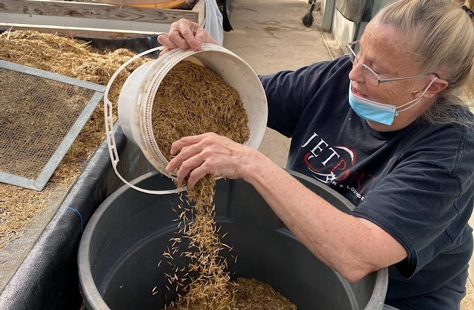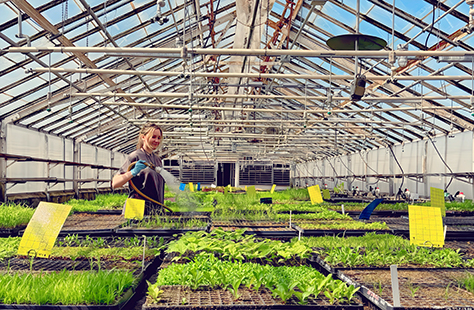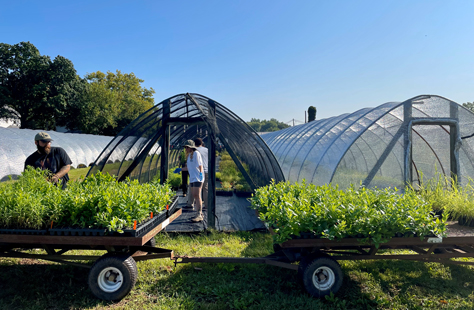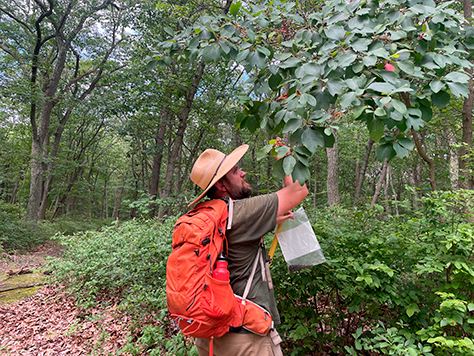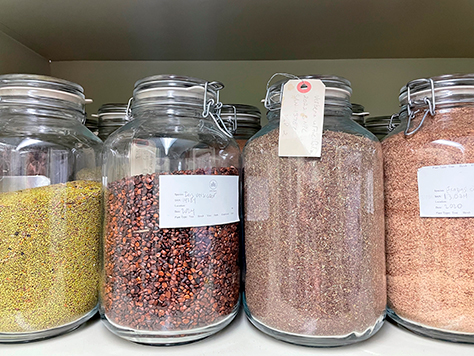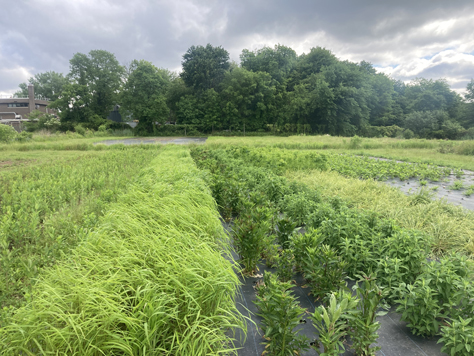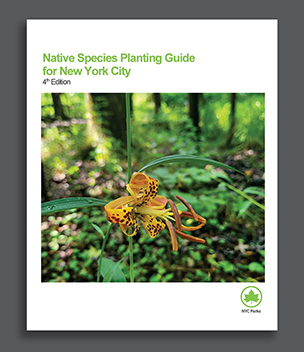NYC Parks Plant Ecology Center and Nursery
Program Areas
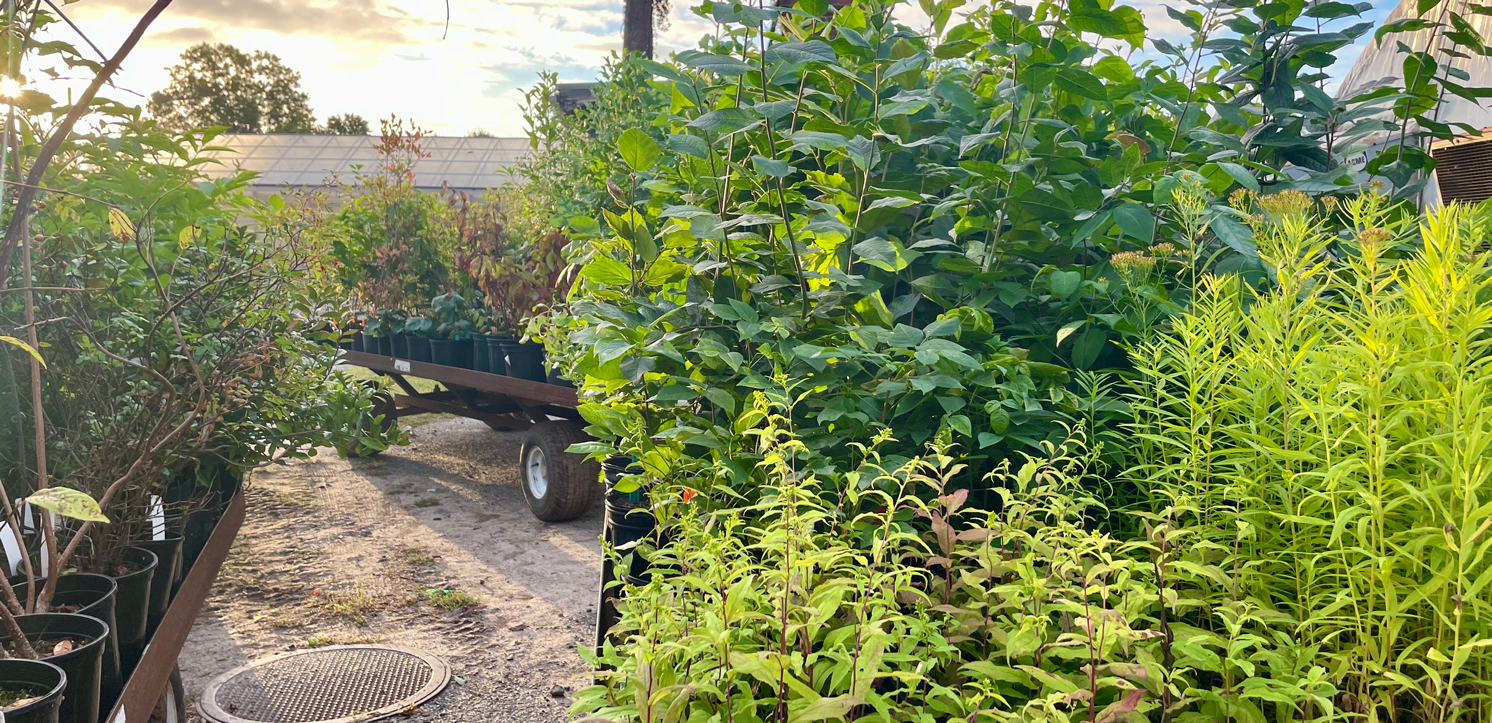
We produce our plants from seeds collected in the wild, choosing sources that are well-suited to our local conditions. We collect seeds in a way that preserves diversity so that the plants we grow have the best chance to overcome environmental challenges. The resulting mix of sources and traits helps ensure the landscapes we restore will thrive now and in the future.
Plant Production Program
PECAN’s Plant Production Program grows and distributes hundreds of thousands of plants in tubes and small pots to projects around New York City. We primarily focus on trees, shrubs, grasses, and wildflowers commonly found in the City’s diverse plant communities. Most plants are distributed to restoration projects on parkland, but we also supply plants to other public-facing projects, from community pollinator gardens and street tree beds to multi-acre construction sites. Plants are distributed during two windows annually, one in the spring and one in the fall. To request plants, please see contact and ordering information below. *Click on image to zoom larger
Propagation
Almost every plant grown at PECAN begins as a locally collected seed, enhancing its suitability for local conditions. We produce 175+ different species, many of which are rarely cultivated commercially, and each one requires different—sometimes complex—germination techniques in our greenhouses. Throughout the year, we treat and sow seeds in ways that mimic the natural conditions they would experience in the wild, while documenting and refining our methods for efficient, ecologically-sound production. We also propagate ferns from spores and, when needed, reproduce certain plants vegetatively. This species-specific approach provides a strong foundation for healthy, resilient plant growth.
Greenhouse Production
After propagation, seedlings are carefully transplanted into small containers in our six greenhouses. Here, they are monitored daily and managed using an integrated plant health program that includes pest and disease prevention, tailored irrigation, and climate control. The greenhouses provide a protected environment where seedlings can establish healthy root systems before they are acclimated to outdoor conditions. As plants mature, they are “stepped up” into larger containers when appropriate.
Outdoor Production
As soon as plants are large enough and the weather is appropriate, they are moved to one of over 40 outdoor hoop houses, where they continue to grow under the care of our operations team. This team also mixes much of our potting media on-site, adjusting the blend to suit different species and environmental conditions. Plants often spend multiple seasons outdoors to reach the size required for our projects. In addition to tending the plants, the operations team maintains the surrounding nursery landscape and continually improves our outdoor infrastructure. This hands-on, adaptive approach supports healthy plant development and ensures our materials are ready for successful outplanting.
Seed Programs
The seed team at PECAN collects, stores, farms, and distributes seed from natural areas to restoration and horticultural projects around the city. Read on for more on how and where our seed is used. *Click on image to zoom larger
Wild Collection
Seed collection from natural populations of wild plants has been the foundation of our restoration work since the beginning. Each season, collectors scout and document wild plant populations in or as close to the city as possible, developing an expert knowledge of our region’s ecosystems and how they are changing over time. We collect seed according to established standards with permission from landowners so as to minimize negative impacts on the source population and maximize the genetic diversity of the collected material. The collected seed is primarily used for our own production, as well as selectively distributed to aligned outside projects. Please reach out for more information.
Seed Storage
Seed storage allows us to have the right seed available when we need it, shortening the plant production timeline. Collecting seed can be time and labor intensive, and the availability of seed naturally varies each year. Many species, when stored in humidity and temperature-controlled conditions, maintain viability for years or decades. For efficient storage, collections are cleaned down to remove excess plant material and empty seeds. As our collections have built up over time, we have sought to establish the right quantity and quality of seed to store while balancing diverse priorities. We have received support from organizations near and far for longer-term conservation seed banking but are now primarily storing seed with the goal of returning it to our ecosystems as soon as is practical.
Seed Farming
The Seed Increase Program (SIP) increases availability of seed through farming species for which there is a greater need than what is appropriate or efficient to collect from the wild. We use farming practices that maintain the natural variability of the species found in the wild populations from which we collect. More than 50 species are grown across six acres on Staten Island and at Floyd Bennett Field in Brooklyn. The program focuses on species that occur in common habitats across New York City that are not available commercially, or that are threatened by issues including habitat loss, forest succession, and herbivory. Harvested seed is used in customized mixes for direct seeding in restoration projects throughout the city and in support of a variety of community-based ecology initiatives.
Orders and Inquiries
PECAN grows species that are commonly found in the various habitats throughout New York City. We can often provide them as plants or as seed to appropriate projects depending on availability. Contact us for more information on current inventory and other opportunities at PECAN@parks.nyc.gov.
Native Species Planting Guide
The NYC Native Species Planting Guide lists native plants of New York City, describes their habitats and common assemblages, and is an excellent resource to incorporate the use of native plants in projects of all types.
